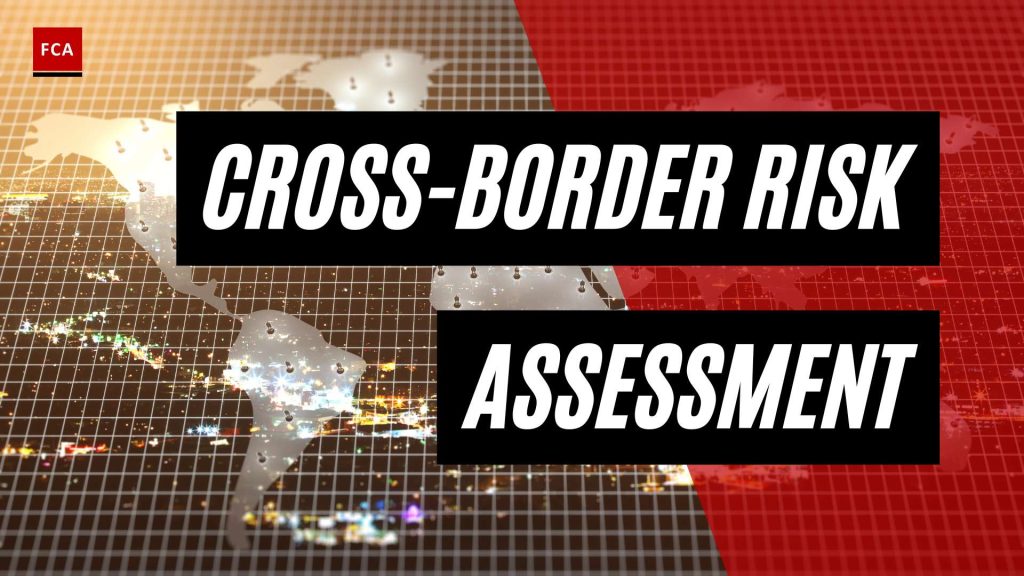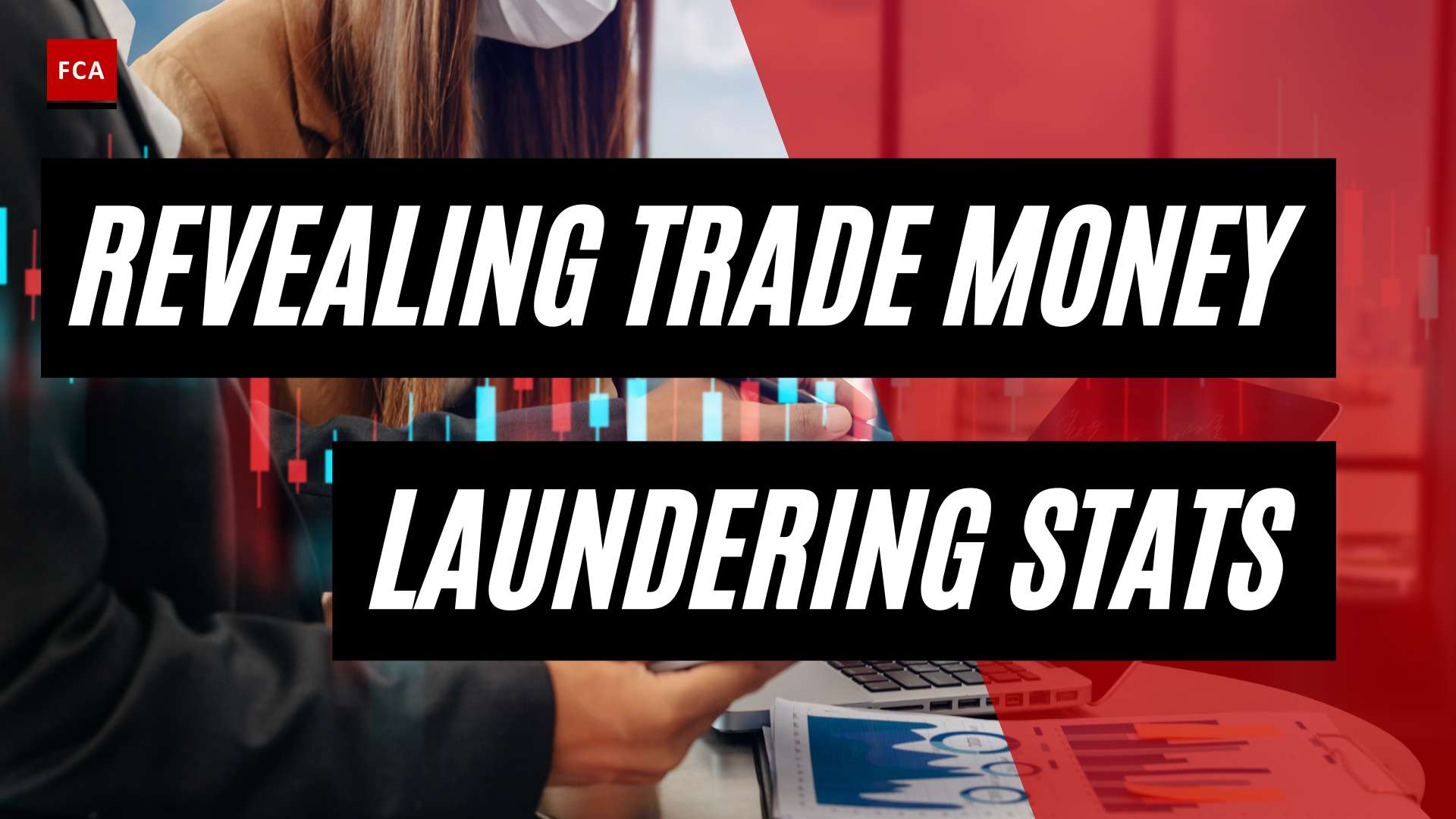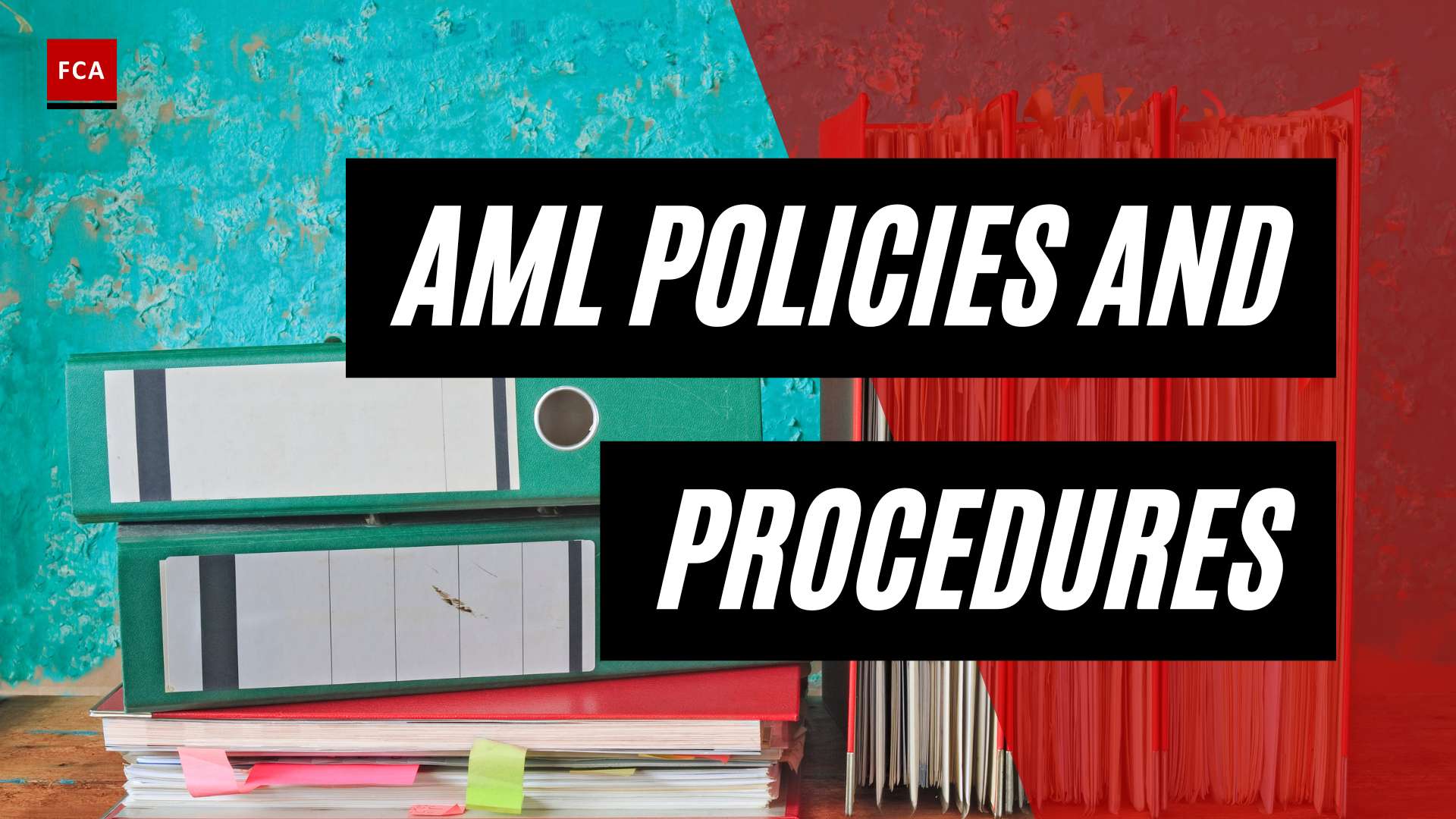Understanding Cross-Border AML Risk Assessments
Cross-border AML risk assessments play a crucial role in identifying and mitigating risks associated with money laundering and terrorist financing on a global scale. These assessments are essential for financial institutions and regulatory authorities to ensure compliance with cross-border AML regulations and effectively combat financial crimes. This section provides an introduction to cross-border AML risk assessments and emphasizes their importance in the financial industry.
Introduction to Cross-Border AML Risk Assessments
Cross-border AML risk assessments involve evaluating the potential risks and vulnerabilities associated with money laundering and terrorist financing activities that transcend national borders. These assessments enable financial institutions to assess the level of risk associated with their operations, customers, and transactions in different jurisdictions. By identifying and understanding these risks, institutions can develop robust strategies and controls to prevent illicit financial activities.
The complexity of money laundering schemes and the constantly evolving methods used by criminals make cross-border AML risk assessments an essential part of an effective AML compliance framework. These assessments help in identifying suspicious patterns, detecting emerging risks, and ensuring that appropriate measures are in place to mitigate the identified risks.
Importance of Cross-Border AML Risk Assessments
Cross-border AML risk assessments are of paramount importance in today’s interconnected financial landscape. They serve several key purposes:
-
Compliance with Regulatory Requirements: Financial institutions are required to comply with international AML compliance standards and regulations to prevent money laundering and terrorist financing. Cross-border AML risk assessments help institutions meet these regulatory obligations by systematically assessing and addressing the risks associated with their cross-border operations.
-
Detection and Prevention of Money Laundering: By conducting thorough risk assessments, financial institutions can identify potential vulnerabilities, patterns, and red flags that may indicate money laundering activities. This enables them to implement appropriate controls, conduct enhanced due diligence, and monitor transactions effectively.
-
Protection of the Financial System: A comprehensive cross-border AML risk assessment framework is crucial for safeguarding the integrity and stability of the global financial system. It helps identify and address vulnerabilities that could be exploited by criminals to launder illicit funds across borders, ensuring the overall security of the financial system.
-
Enhanced Due Diligence: Cross-border AML risk assessments enable financial institutions to perform detailed due diligence on their foreign business relationships, counterparties, and customers. This due diligence helps institutions understand the associated risks and implement necessary measures to mitigate them, such as cross-border AML monitoring and cross-border AML reporting requirements.
To effectively navigate the challenges and complexities of cross-border financial transactions, financial institutions must prioritize cross-border AML risk assessments. By comprehensively evaluating the risks associated with foreign financial institutions, business relationships, and high-risk countries, institutions can enhance their AML compliance programs and contribute to the global fight against money laundering and terrorist financing.
Challenges in Cross-Border AML Risk Assessments
When it comes to cross-border AML risk assessments, there are several challenges that financial institutions and organizations face. These challenges can hinder the effectiveness of AML compliance efforts and increase the vulnerability to financial crime. Let’s explore some of these challenges in detail.
Regulatory Complexity and Inconsistency
One of the primary challenges in cross-border AML risk assessments is the regulatory complexity and inconsistency. While regulators and the global financial services industry call for improved AML measures, the regulations themselves are often ambiguous and subject to interpretation by institutions. This lack of standardization leads to inconsistencies in measuring and defining financial crime risks, causing limited or different actions to be taken by financial institutions (Elucidate).
The absence of a unified global framework makes it challenging for organizations to navigate and comply with different regulatory requirements across various jurisdictions. This complexity increases the compliance burden and may result in inadequate risk assessments, leaving financial institutions susceptible to money laundering and other illicit activities.
Lack of Standardization and Harmonization
A lack of standardization and harmonization in AML regulations poses another significant challenge in cross-border AML risk assessments. Financial institutions struggle to evaluate counterparty risk comprehensively due to a lack of appropriate reporting metrics, tools, and analytics. This failure to assess risk adequately has been demonstrated in recent cases, such as the Danske Bank money laundering scandal, where financial crime risk was treated as an operational rather than a governance issue (Elucidate).
The absence of standardized regulations across the industry and markets makes it difficult for financial institutions to consistently measure and define financial crime risks. This inconsistency can lead to limited or different actions being taken by financial institutions, hindering their ability to combat money laundering effectively.
Resource Limitations and Technological Constraints
Resource limitations and technological constraints pose significant challenges in cross-border AML risk assessments. Many financial institutions may lack the necessary data or technology resources to effectively detect and prevent money laundering activities. They may struggle with insufficient access to customer, transaction, or third-party data and may lack the necessary analytics tools to identify suspicious activity (Sanction Scanner).
This resource shortage is particularly prominent in small and medium-sized institutions, which may also struggle with a lack of compliance officers, teams, and resources for outsourcing solutions. The lack of data and technology resources can impede the ability to perform comprehensive risk assessments, leaving financial institutions vulnerable to money laundering and other illicit activities.
Shortage of Qualified AML Professionals
Another challenge in cross-border AML risk assessments is the shortage of qualified AML professionals. The demand for skilled AML professionals often exceeds the supply, making it difficult for organizations to build robust AML compliance teams. The scarcity of qualified professionals hampers the ability to effectively manage and mitigate AML risks, leading to potential vulnerabilities in the organization’s AML compliance framework.
Addressing this challenge requires investment in training programs, professional development, and attracting top talent to the field of AML compliance. By nurturing a pool of qualified professionals, organizations can enhance their capabilities in conducting thorough and effective cross-border AML risk assessments.
Navigating the challenges in cross-border AML risk assessments requires a proactive approach from financial institutions and organizations. By addressing regulatory complexity, promoting standardization and harmonization, investing in resources and technology, and cultivating a pool of qualified professionals, organizations can strengthen their AML compliance efforts and mitigate the risks associated with cross-border financial crime.
Key Considerations in Cross-Border AML Risk Assessments
When conducting cross-border AML risk assessments, there are several key considerations that need to be taken into account. These considerations include evaluating AML risk from foreign financial institutions, assessing AML risk from business relationships, and conducting risk assessments for transactions in high-risk countries.
Evaluating AML Risk from Foreign Financial Institutions
In a cross-border AML risk assessment, it is important to evaluate the level of AML risk that arises due to relationships with foreign financial institutions (Canada.ca). This involves understanding the regulatory and AML regime of the foreign jurisdiction, the level of corruption and rule of law in that country, as well as the potential sanctions or penalties that may be imposed (Canada.ca). By considering these factors, organizations can assess the potential AML risks associated with their interactions with foreign financial institutions and take appropriate measures to mitigate those risks.
Assessing AML Risk from Business Relationships
Another crucial consideration in cross-border AML risk assessments is assessing the AML risk arising from business relationships (Canada.ca). This involves determining the ownership and control structure of customers and beneficial owners, understanding the nature of the corporate entity, and identifying any unusual or suspicious features in the business relationship. By conducting a thorough assessment of business relationships, organizations can identify potential red flags and implement appropriate due diligence measures to detect and prevent money laundering and other illicit activities.
Risk Assessment for Transactions in High-Risk Countries
Conducting a risk assessment for transactions in high-risk countries and jurisdictions is also an essential component of cross-border AML risk assessments (Canada.ca). This involves evaluating the money laundering and terrorist financing threat, understanding the legal framework in place, assessing the transparency and level of corruption, and considering the effectiveness of AML controls and supervision in that jurisdiction (Canada.ca). By carefully assessing the risks associated with transactions in high-risk countries, organizations can implement enhanced due diligence measures and mitigating controls to reduce the likelihood of illicit financial activities.
By considering these key considerations in cross-border AML risk assessments, organizations can effectively identify and manage the AML risks associated with their international operations. It is crucial to stay updated on cross-border AML regulations and international AML compliance standards to ensure compliance with applicable laws and regulations. Implementing robust risk assessment frameworks and conducting regular reviews are vital to maintain a strong AML compliance program and protect organizations from the risks of money laundering and other financial crimes.
Enhancing Cross-Border AML Risk Assessment Frameworks
To effectively manage cross-border AML risk assessment, financial institutions need to continuously enhance their frameworks. This involves collaboration with regulatory authorities, leveraging advanced technologies, and developing robust internal controls and compliance programs.
Collaboration with Regulatory Authorities
Collaboration with regulatory authorities is crucial for financial institutions to stay updated on cross-border AML regulations and ensure compliance. By establishing strong relationships and engaging in regular dialogues, institutions can gain insights into emerging trends, best practices, and regulatory expectations.
Collaboration allows financial institutions to receive guidance on risk assessment methodologies and obtain clarifications on regulatory requirements. It also facilitates information sharing, enabling institutions to access valuable intelligence that enhances their ability to detect and prevent money laundering activities.
Leveraging Advanced Technologies
Leveraging advanced technologies is essential for enhancing cross-border AML risk assessment processes. Machine learning, artificial intelligence (AI), and data analytics can significantly improve the accuracy and efficiency of transaction monitoring.
By deploying innovative solutions, financial institutions can better identify anomalies, detect suspicious activities, and reduce false positives. These technologies enable institutions to analyze vast amounts of data in real-time, identify patterns, and generate actionable insights. For instance, solutions like Tookitaki’s cross-border AML risk assessment platform utilize machine learning and AI to enhance operational efficiencies and improve compliance processes (Tookitaki).
Furthermore, advanced technologies facilitate the integration of data from multiple sources, enabling a holistic view of customer behavior and transaction patterns. This comprehensive understanding enhances the effectiveness of risk assessments and strengthens the detection of potential money laundering activities.
Developing Internal Controls and Compliance Programs
Financial institutions must develop robust internal controls and compliance programs to enhance their cross-border AML risk assessment frameworks. These programs should encompass comprehensive policies, procedures, and training programs that align with global AML compliance standards.
Internal controls should include measures to verify the identity of customers and assess the risk associated with business relationships. Regular monitoring and review processes should be in place to ensure ongoing compliance with AML regulations. Additionally, institutions should establish effective reporting mechanisms to promptly escalate suspicious transactions and activities.
Compliance programs should be tailored to the institution’s specific risk profile and the jurisdictions in which it operates. Adequate resources and qualified staff should be allocated to manage compliance obligations effectively. Regular training programs should be conducted to keep employees updated on evolving regulatory requirements and emerging money laundering techniques.
By developing strong internal controls and compliance programs, financial institutions can mitigate the risk of cross-border money laundering and ensure adherence to global AML standards.
Enhancing cross-border AML risk assessment frameworks requires a multi-faceted approach that includes collaboration with regulatory authorities, leveraging advanced technologies, and developing robust internal controls and compliance programs. By adopting these strategies, financial institutions can effectively manage the complexities of cross-border transactions, identify potential risks, and safeguard the integrity of the global financial system.
The Role of Technology in Cross-Border AML Risk Assessments
As the world becomes increasingly interconnected, the fight against money laundering and financial crime requires a comprehensive understanding of cross-border AML regulations. Technology plays a crucial role in enabling effective cross-border AML risk assessments by providing opportunities and presenting challenges that need to be navigated.
Opportunities and Challenges of New Technologies
New technologies, such as artificial intelligence, machine learning, and blockchain, offer significant opportunities to enhance cross-border AML risk assessments. These technologies enable more efficient transaction monitoring, customer due diligence, and enhanced cooperation between jurisdictions to combat financial crimes (FATF). By leveraging these advancements, financial institutions and regulatory authorities can strengthen their capabilities in detecting and preventing money laundering activities that transcend borders.
Artificial intelligence and machine learning algorithms can analyze vast amounts of data in real-time, identifying patterns and anomalies that may indicate suspicious transactions. This technology enables more accurate and timely identification of potential risks, allowing for proactive measures to be taken (FATF). Additionally, blockchain technology provides an immutable and transparent record of transactions, enhancing the traceability of funds and making it more difficult for illicit activities to go undetected.
However, alongside these opportunities, new technologies also bring challenges to cross-border AML risk assessments. One significant challenge is the lack of standardized protocols and interoperability between different AML/CFT systems. This discrepancy can create loopholes that criminals may exploit, highlighting the need for enhanced collaboration and harmonization of regulations across jurisdictions (FATF). Jurisdictions must work together to develop common standards and frameworks that facilitate effective information sharing and cooperation.
Importance of Information Sharing and Interoperability
Effective cross-border AML risk assessments heavily rely on information sharing and interoperability between jurisdictions and financial institutions. However, the lack of standardized protocols and cross-border data sharing limitations present significant challenges in this area. These challenges hinder the comprehensive assessment of cross-border transactions and inhibit the detection and prevention of money laundering and terrorist financing activities (FATF).
To address these challenges, regulatory authorities and financial institutions must prioritize the development of frameworks that enable secure and efficient information sharing. This includes establishing mechanisms for cross-border data exchanges, ensuring data privacy and security, and promoting interoperability between different systems and jurisdictions. By facilitating information sharing and interoperability, the effectiveness of cross-border AML risk assessments can be significantly improved.
In conclusion, technology offers immense opportunities to enhance cross-border AML risk assessments. Advancements such as artificial intelligence, machine learning, and blockchain have the potential to revolutionize the fight against money laundering and financial crime. However, to harness these opportunities effectively, it is crucial to address challenges related to standardized protocols, interoperability, and information sharing. By collaborating internationally and harmonizing regulations, the global community can strengthen cross-border AML risk assessment frameworks and create a more robust defense against illicit financial activities.
Global Efforts and Initiatives in AML Risk Assessment
When it comes to combating money laundering and terrorist financing, global efforts and initiatives play a crucial role in ensuring effective cross-border AML risk assessments. International organizations and regulatory bodies play an important role in shaping regulations, promoting harmonization, and enhancing the overall AML compliance framework. Let’s delve into the role of international organizations and the harmonization of regulations and standards in the field of AML risk assessment.
The Role of International Organizations
International organizations such as the International Monetary Fund (IMF) and the Financial Action Task Force (FATF) have been at the forefront of shaping anti-money laundering and combating the financing of terrorism (AML/CFT) policies globally. The IMF has played a significant role in covering these issues in its surveillance, lending, and capacity development functions for the past 20 years, aiming to enhance the financial integrity of member countries (IMF). By providing guidance, conducting evaluations, and offering technical assistance, these organizations contribute to the development of robust AML frameworks and the implementation of effective risk assessment methodologies.
Harmonization of Regulations and Standards
One of the challenges in cross-border AML risk assessments is the regulatory complexity and inconsistency across jurisdictions. To address this, international efforts focus on harmonizing regulations and standards. Harmonization promotes consistency in AML measures, making it easier to identify and analyze risks associated with cross-border transactions. The harmonization of regulations and standards enables financial institutions and regulatory authorities to work together more effectively, improving the overall effectiveness of AML risk assessments.
Standardization also facilitates information sharing and cooperation between jurisdictions, ensuring a more comprehensive understanding of cross-border risks. This collaboration helps identify and mitigate potential vulnerabilities and strengthens the ability to detect and prevent money laundering and terrorist financing activities.
By establishing common frameworks and guidelines, international organizations and regulatory bodies strive to create a level playing field for AML compliance across borders. This reduces the burden on financial institutions and promotes more efficient and effective risk assessments.
To keep pace with the rapidly evolving financial landscape, international organizations recognize the need to address emerging challenges posed by new technologies. Artificial intelligence, machine learning, and blockchain technology offer opportunities for enhanced cross-border AML risk assessments. However, the adoption of these technologies requires increased cooperation, standardization, and interoperability between different AML/CFT systems (FATF).
Global efforts in AML risk assessment, including the role of international organizations and the harmonization of regulations and standards, are essential for effective cross-border collaboration. By working together, jurisdictions can create a more robust and unified AML compliance framework, better equipped to combat the constantly evolving landscape of money laundering and terrorist financing.
Emerging Trends and Future Outlook
As cross-border financial transactions continue to evolve, it is essential for anti-money laundering (AML) professionals to stay abreast of emerging trends and anticipate the future outlook in order to effectively address risks. Two key areas that warrant attention in cross-border AML risk assessments are the impact of digital payment platforms and virtual assets, as well as addressing the macro-economic impacts of money laundering.
Impact of Digital Payment Platforms and Virtual Assets
The increasing use of digital payment platforms and virtual assets in cross-border transactions has brought about new challenges for AML compliance. These technologies have raised concerns related to the identification, verification, and monitoring of customers, as criminals may exploit jurisdictional discrepancies for illicit financial activities. To combat these risks, enhanced AML and know your customer (KYC) measures are necessary.
Traditional AML frameworks need to adapt to the evolving landscape by incorporating robust risk assessment methodologies that account for the unique characteristics of digital payment platforms and virtual assets. This includes implementing effective transaction monitoring systems, conducting thorough customer due diligence, and enhancing international cooperation to combat financial crimes.
Addressing Macro-Economic Impacts of Money Laundering
Money laundering has far-reaching macro-economic impacts that go beyond individual transactions. The illicit funds generated through money laundering can distort economic stability, hinder sustainable development, and erode public trust in financial systems. Therefore, addressing the macro-economic impacts of money laundering is crucial in global AML efforts.
Regulators and financial institutions must work together to identify and mitigate the systemic risks associated with money laundering. This involves implementing robust AML risk assessment frameworks, enhancing cross-border information sharing, and promoting international cooperation in combating money laundering activities.
By adopting a comprehensive approach to AML risk assessments, policymakers and practitioners can better understand the macro-economic consequences of money laundering and develop effective strategies to mitigate its impact. This includes leveraging advanced technologies and data analytics to identify patterns, trends, and high-risk activities, as well as fostering collaboration among regulatory authorities and financial institutions.
To navigate the complex landscape of cross-border AML risk assessments, it is imperative to stay updated on emerging trends and be proactive in adapting AML frameworks. By addressing the impact of digital payment platforms and virtual assets, as well as the macro-economic impacts of money laundering, AML professionals can contribute to a more secure and resilient financial ecosystem.
The Role of Technology in Cross-Border AML Risk Assessments
Technology plays a crucial role in enhancing cross-border AML risk assessments. As financial crimes become increasingly sophisticated and globalized, the use of advanced technologies can help financial institutions and regulatory authorities stay ahead of evolving risks. In this section, we will explore the opportunities and challenges of new technologies in cross-border AML risk assessments, as well as the importance of information sharing and interoperability.
Opportunities and Challenges of New Technologies
New technologies, such as artificial intelligence (AI), machine learning, and blockchain, offer significant opportunities to enhance cross-border AML risk assessments. AI and machine learning algorithms can analyze vast amounts of data in real-time, identify patterns, and detect suspicious activities more efficiently than traditional manual processes. These technologies enable financial institutions to strengthen their transaction monitoring and customer due diligence processes, ensuring timely detection and prevention of money laundering and other financial crimes.
Blockchain technology, with its inherent transparency and immutability, has the potential to revolutionize cross-border financial transactions. By creating a decentralized and tamper-proof ledger, blockchain can enhance traceability and auditability, making it harder for criminals to obscure their illicit activities. It also allows for secure sharing of information between different entities involved in cross-border transactions, enabling more effective collaboration in combating financial crimes.
However, along with the opportunities, there are challenges associated with adopting new technologies in cross-border AML risk assessments. The lack of standardized protocols and interoperability between different AML/CFT systems poses a significant hurdle. Jurisdictional discrepancies and varying regulatory requirements can create gaps that criminals may exploit for illicit financial activities. To address these challenges, increased international cooperation, harmonization of regulations, and the development of common standards are crucial.
Importance of Information Sharing and Interoperability
Effective cross-border AML risk assessments rely on robust information sharing and interoperability between financial institutions, regulatory authorities, and other relevant stakeholders. Timely and accurate exchange of information helps identify and mitigate risks associated with cross-border transactions, especially in the context of rapidly evolving technologies.
Collaborative platforms and networks can facilitate information sharing, enabling financial institutions and regulators to gain valuable insights into emerging risks and trends. By sharing knowledge and best practices, stakeholders can collectively strengthen their AML frameworks, enhance risk assessment capabilities, and foster a more coordinated approach to combating financial crimes.
Interoperability between different AML/CFT systems is crucial to ensure seamless communication and data exchange. This requires the adoption of common data formats, data standards, and interoperability frameworks. By establishing interoperability, financial institutions and regulatory authorities can overcome the challenges posed by fragmented systems and streamline cross-border AML risk assessments.
In conclusion, the integration of new technologies in cross-border AML risk assessments presents significant opportunities for combating financial crimes. Leveraging AI, machine learning, blockchain, and other advanced tools can enhance transaction monitoring, customer due diligence, and collaboration between jurisdictions. However, to fully realize the potential of these technologies, international cooperation, harmonization of regulations, and standardized protocols are essential. By embracing technology and fostering information sharing and interoperability, we can strengthen cross-border AML risk assessment frameworks and safeguard the integrity of the global financial system.








